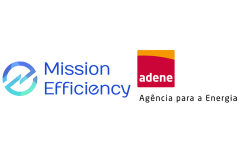SDG 7.3 - Energy efficiency
Sustainable Development Goal 7.3 calls for doubling the global rate of improvement in energy efficiency between compared with the 1990-2010 baseline.
How SDG 7.3 is measured
Energy intensity, the amount of energy used to produce a unit of economic output, is used as a proxy for energy efficiency and used to track progress on SDG 7.3. Global progress toward achieving SDG 7.3 is measured by the annual change in total energy supply and the GDP of the country or region being measured. A reduction in energy intensity indicates improvements in energy efficiency, by using less energy to produce the same amount of economic output or in other words by having more economic output per energy consumed.
Sector energy efficiency indicators provide more specific information to understand how energy is used in each of the sectors, such as transport, industry, households or other services sectors. Sector specific information can be used to show policymakers where energy savings can be made and help plan energy demand and future investments.
Target 7.3
Is the world on track?
Not yet, but we have the technologies and policies to get back on track. According to Tracking SDG7: The Energy Progress Report, in the decade from 2010-2020, global energy intensity saw an annual improvement of 1.8 percent. Yet, this falls short of the SDG 2.6 annual improvement initially proposed by the United Nations. Looking ahead, energy intensity must now improve by at least 3.8 percent annually from every year until 2030. Achieving the International Energy Agency’s (IEA’s) Net Zero Emissions by 2050 Scenario requires an even more ambitious improvement rate of 4.2 percent annually.
Relationship between economic growth and the rate of improvement in energy efficiency
This chart shows that not all countries are on the same path when it comes to energy efficiency improvement, however, it does show that there is a trend (yellow line) that if a country has higher economic growth, they are more likely to have a greater rate of energy intensity reduction – the SDG 7.3 indicator for progress on energy efficiency.
What does a negative rate of improvement mean?
If the country has a positive GDP growth, a negative rate of improvement indicates that the primary energy use grew at a faster rate than GDP growth.
If the country has a negative GDP growth, a negative rate of improvement indicates that the primary energy shrunk at a slower pace than the GDP decrease. In both cases, this means that energy efficiency progress is going backwards.
In summary, a negative rate of change in energy intensity means that the country is using less energy to produce a unit of GDP. However, it is necessary to understand the underlying factors driving this change in energy consumption. For instance, a decrease in energy intensity might result from an economy shifting from energy-intensive economic structure, such as manufacturing, to less energy-intensive sectors, like services.
What is the yellow line showing?
The yellow line is the trendline for all countries from 2016 to 2021 with the relationship between improvements in energy efficiency and GDP growth. This line does not show what is needed to achieve the SDG 7.3 target, but does show that there is a correlation between economic growth and efficient use of energy.
Why SDG7.3 is important?
Improving energy efficiency is key to achieving SDG7 and ensure universal access to affordable, reliable, sustainable and modern energy for all. By doubling the global rate of improvement in energy efficiency, we can significantly reduce energy consumption while maintaining the same level of energy services, making energy more affordable and accessible, bringing other benefits that extend across several SDGs. Improving energy efficiency lowers the demand for energy resources, decreases the environmental impact of energy production and consumption, and enhances energy security by making energy systems more resilient and less dependent on fossil fuels.
Doubling the annual average rate of energy efficiency improvements to 4%, as stated in the COP28 Global Renewable and Energy Efficiency Pledge, reflects the need for an integrated strategy and international cooperation to combine energy efficiency with renewable energy. Ramping up renewable energy capacity without enhancing energy efficiency on both the supply and demand sides could result in energy waste and continued reliance on fossil fuels. The combined approach of increasing renewable capacity and enhancing energy efficiency is crucial for phasing out fossil fuels and achieving a cost-effective transition to renewable energy. Improved efficiency lowers total energy demand, allowing renewables to constitute a larger share of the energy mix more rapidly. This strategy not only reduces energy intensity and costs but also delivers substantial environmental and social benefits.
Maximizing synergies between renewable energy and energy efficiency demands a deep understanding and political commitment to identify opportunities across countries and sectors, alongside strategic investment. This involves not only recognizing potential but also fostering collaboration among stakeholders to implement integrated solutions that optimize resource utilization and mitigate environmental impact.
Benefits of energy efficiencyAccess to energy: Energy efficiency can increase the services delivered by each kilowatt of electricity and improve energy access. Air quality: Energy efficiency can reduce both indoor and outdoor concentrations of air pollutants. Asset values: Energy efficiency can increase asset values for homeowners, businesses and utilities. Economic benefits: Cost-effective energy efficiency improvements can have positive macroeconomic impacts, boosting economic activity. Emissions savings: Energy efficiency reduces GHG emissions, both direct emissions from fossil fuel, and indirect emissions from electricity generation. Employment: Energy efficiency can induce job creation, improve productivity and decreases employee absenteeism. Energy prices: Energy efficiency can lower energy prices by reducing the need to add new power generation or transmission capacity and by reducing pressure on energy resources. Energy savings: Energy efficiency reduces the amount of energy used to provide a service. Energy security: Energy efficiency can reduce the reliance on energy imports and reduce the risks of supply interruptions. Heath and wellbeing: Energy efficiency supports physical and mental health with healthy temperatures, humidity, noise, and air quality. Household savings: Energy efficiency can enable higher disposable income by lowering energy bills and other households costs. Productivity: Energy efficiency leads to productivity gains by lowering maintenance issues and optimising processes. Public budgets: Energy efficiency delivers financial benefit to public budgets through increased income and decreased expenses. |
Latest on energy efficiency

In-person
20 Sep 2024

Page

News
18 May 2024

News
15 Mar 2024
